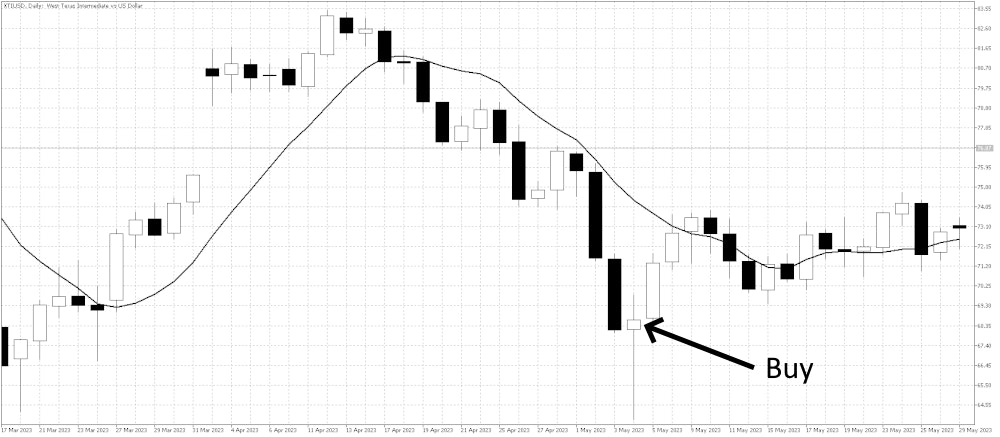Nick Goold
Contrarian trading is a strategy where traders purposely go against prevailing market trends. This trading style operates on the belief that markets often exhibit an exaggerated reaction to news or events, leading to temporary mispricing of Forex markets. When this happens, contrarian traders seize the opportunity to profit when the market adjusts itself. This article examines contrarian strategies in forex trading and details how traders can implement them effectively.
Contrarian Trading Defined
At its core, contrarian trading is based on the theory that collective behavior can lead to an overextension in currency prices. When a large percentage of traders are bullish and buying a particular currency pair, contrarian traders will take the opposite stance, predicting that the majority will be wrong and that a market reversal is on the horizon. The same applies when the market is predominantly bearish; contrarians will see this as a prime buying opportunity.
Unraveling the Rationale Behind Contrarian Trading
The logic underpinning contrarian trading is deeply embedded in the psychology of market participants. Emotional extremes, particularly fear, and greed, often drive markets. These collective emotions can cause an overreaction to news events, economic data releases, or even market rumors. Overreactions can result in short-term mispricing of currency pairs, presenting opportunities for contrarian traders to exploit.
Key Contrarian Strategies in Forex Trading
Contrarian strategies in forex trading typically fall into two categories: reversal trading and fading.
Reversal Trading
Reversal traders strive to pinpoint the moments when the market will change direction, colloquially referred to as tops and bottoms. These traders anticipate a reversal at these market extremes because they believe the majority's opinion is likely incorrect. Identifying these turning points is challenging and requires an in-depth understanding of technical analysis and sentiment indicators.

Fading
Fading involves short-term trades against the trend. A fader might sell if a currency pair is in an upward trend, predicting a temporary price decline before the overall upward trend resumes. Fading relies heavily on accurate timing, making it a short-term strategy.
Tools and Techniques for Contrarian Trading
Contrarian traders typically use a mix of technical analysis and sentiment analysis tools to identify trading opportunities. Some of these key tools include:
Technical Analysis
Tools like support and resistance levels, trendlines, and chart patterns help identify potential reversal points. Oscillating indicators such as the Relative Strength Index (RSI) or Bollinger Bands can highlight when a currency pair is overbought or oversold, signaling a potential market reversal.
Sentiment Analysis
This analysis involves measuring the overall mood or sentiment of market participants. Sentiment is particularly crucial to contrarian traders when it is overwhelmingly positive or negative, as these could indicate an impending market reversal.
Economic Indicators and News Events
Major economic indicators and news events can elicit significant market reactions, sometimes causing the market to overreact and creating an opportunity for a contrarian trade. However, trading in response to these events is a high-risk strategy that requires a well-thought-out trading plan.
Risks and Challenges of Contrarian Trading
Contrarian trading carries significant risk. Markets can remain irrational for longer than a trader can stay solvent – as famously stated by economist John Maynard Keynes. Therefore, a market can continue trending in one direction longer than a contrarian trader anticipates, potentially leading to severe losses. Effective risk management is paramount in contrarian trading. Traders should use stop-loss orders to limit potential losses and take-profit orders to secure profits when the price moves in the desired direction.
Predicting market reversals accurately is also inherently challenging. While technical analysis tools can offer valuable insights, they are imperfect and should be used with other forms of analysis. Furthermore, contrarian trading often requires a great deal of patience, as the market may take time to correct, and profitable opportunities may not present themselves immediately.

Steps Towards Successful Contrarian Trading
Becoming a successful contrarian trader is not easy; it requires a disciplined approach and a clear understanding of market dynamics. Here are some steps that can guide traders toward successful contrarian trading:
Knowledge and Understanding
Traders must educate themselves about the forex market's intricacies, understand how economic indicators affect market movements, and become well-versed in technical and sentiment analysis.
Practicing the Strategy
Traders should practice contrarian trading strategies in a risk-free environment, like a demo account, before venturing into live trading.
Developing a Trading Plan
A clear, well-defined trading plan is crucial. It should include the trader's risk tolerance, preferred currency pairs to trade, specific conditions for entering and exiting trades, and guidelines for money management.
Consistent Evaluation and Adjustment
Like any trading strategy, contrarian trading strategies need regular evaluation and adjustment to align with changing market conditions and improve performance.
Conclusion
A successful contrarian trader understands market psychology, employs technical and sentiment analysis tools proficiently, and adheres strictly to disciplined risk management. Traders should fine-tune their contrarian strategies in a demo account before transitioning to live trading. When executed correctly, contrarian strategies can offer rewarding opportunities to those willing to withstand the emotional ebbs and flows of the market and swim against the current.

